Papers by Thierry Dana-picard
Maple transactions, Nov 1, 2023
We provide constructions of 3 classical curves, using novel approaches, based on tools for automa... more We provide constructions of 3 classical curves, using novel approaches, based on tools for automated exploration and reasoning, especially for the determination of geometric loci. Dragging and animations are the core features in use. The different ways yield an output based either on numerical computations or on symbolic computations (these use Gröbner bases packages). These curves, which are generally presented as separate cases, appear here in a unifying frame. This work is a contribution to the study of plane curves and to a working frame aimed at developing the dialog between different kinds of mathematical software.
AIMS mathematics, 2023
We explore the construction of curves of degree 8 (octics) appearing as geometric loci of points ... more We explore the construction of curves of degree 8 (octics) appearing as geometric loci of points defined by moving points on an ellipse and its director circle. To achieve this goal we develop different computer algebra methods, dealing with trigonometric or with rational parametric representations, as well as through implicit polynomial equations, of the given curves. Finally, we highlight the involved mathematical or computational issues arising when reflecting on the outputs obtained in each case.

Mathematics in Computer Science, Jan 24, 2023
We explore envelopes and offsets of plane curves using automated methods, based on the usage of C... more We explore envelopes and offsets of plane curves using automated methods, based on the usage of Computer Algebra Systems and Dynamical Geometry Systems. Work is performed using both parametric presentations and implicit equations. Implicitization involves well-known algorithms from the theory of Gröbner bases. In particular, irreducibility of the involved polynomials, whence irreducibility of the obtained curves is checked using the latest developments of the software tool GeoGebra Discovery. We conclude with comments on the 4C's of twenty-first century Education, applied to mathematics and show how networking between technologies provides a suitable environment to apply and develop a 5th C, namely curiosity. Keywords Automated methods • Plane curves • Offsets • Envelopes • 4 C's of education Mathematics Subject Classification 14P05 • 14Q05 • 14P99 1 Introduction The conference series Applications of Computer Algebra (ACA), has been held yearly for 26 years, has a recurring working group on educational aspects of computer algebra. Our paper is a contribution to this track of the ACA conference. We would like to demonstrate our experiences on a graphically challenging topic: the visualization of envelopes and offsets, but at the same time we explain several difficulties that are partly technical, mathematical and communication related. Our report includes several aspects that arose during our experiments: challenges in formalization, difficulties in expressing formulas and visualizing them in software systems, heavy computations, and communication issues between humans and machines. As a result, our paper is a mixture of concepts of mathematical, technical and educational ideas, but it reflects how scientific work in an educational context is usual in today's applications.
Mathematics in Computer Science, Jul 3, 2018
We present a study of a classical plane real curve in a technology-rich environment. The interpla... more We present a study of a classical plane real curve in a technology-rich environment. The interplay between implicit and parametric presentations is enhanced. Cooperation of a computer algebra system and of a dynamical geometry system enables to discover properties that may be hidden in handmade computations. Moreover, technology does not act only as a solver, but the outputs reveal a need to expand the framework from geometry over the reals to some usage of complex variables. The paper is a case study of an undergraduate approach, that is, its main audience is educators at the university level.

Springer proceedings in mathematics & statistics, 2017
Learning mathematics in a technology-rich environment enables to revive classical topics which ha... more Learning mathematics in a technology-rich environment enables to revive classical topics which have been removed from the curriculum a long time ago. Theoretical issues and their applications can be studied within an experimental process, using automated proofs. We present how envelopes of one-parameter families of surfaces in 3D space and some of their properties can be presented using technology. This approach may be useful for students in an engineering curriculum and for inservice/pre-service teachers. Working with technology and taking advantage of both algebraic symbolic features, such as algorithms computing Gröbner bases, and visualization tools, educational and professional profit is obtained such as reviving classical topics from differential geometry, broadening horizons, introducing new topics. The purpose is also to enhance the learners experimental skills. In such a framework, conversion between various registers of representation is an important issue.
Rocky Mountain Journal of Mathematics, Mar 1, 1992

Journal of Symbolic Computation, Mar 1, 2020
Learning mathematics in a technology rich environment enables to revive classical topics which ha... more Learning mathematics in a technology rich environment enables to revive classical topics which have been removed from the curriculum a long time ago. Theoretical issues and their applications can be studied within an experimental process, using automated proofs. We present a technology based study of isoptic curves of an astroid, which is a non smooth and non convex curve. We take advantage of both algebraic symbolic features, such as resultants and Gröbner bases packages implemented in a Computer Algebra System (CAS), together with a Dynamical Geometry System (DGS). The usage of algebraic methods is made possible by the translation of the trigonometric parametrization into rational expressions, and then into polynomial equations. The dynamics provided by the DGS enable the discovery of special features of the isoptics, in particular the fact that the isoptic has singular points and, according to the viewing angle, the isoptic may be inscribed in the astroid or not.
Lecture Notes in Computer Science, 2018
We present two approaches to symbolically obtain isoptic curves in the dynamic geometry software ... more We present two approaches to symbolically obtain isoptic curves in the dynamic geometry software GeoGebra in an automated, interactive process. Both methods are based on computing implicit locus equations, by using algebraization of the geometric setup and elimination of the intermediate variables. These methods can be considered as automatic discovery.
ACM Communications in Computer Algebra, Aug 14, 2015
Nowadays, the interplay between Geometry and Algebra is present almost everywhere. Classical theo... more Nowadays, the interplay between Geometry and Algebra is present almost everywhere. Classical theorems from Geometry may be revived with the usage of automatic theorem proving, based on Computer Algebra Systems and other technologies. Pech's book displays six stories about classical theorems, providing both a computer based proof and a classical one, making the reader acquainted with new methods of discovering and proving results together with leading the same reader to think about the inner beauty of classical ways of proving.
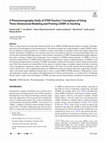
Journal of Science Education and Technology, Nov 10, 2022
There is a large amount of research that indicates that the use of 3DMP in STEM education improve... more There is a large amount of research that indicates that the use of 3DMP in STEM education improves students' knowledge, motivation, and participation in the learning process. Nevertheless, despite the existing attempts to market 3DMP in education, its adoption in schools remains low. A number of studies with teachers in secondary schools and colleges indicate that teachers' perceptions of 3DMP are one of the key factors for its successful use. However, to our best knowledge, there is no research that examined STEM upper primary school teachers' perception on 3DMP. Through phenomenographic approach, this study is seeking to address the existing gaps. Four conceptions of 3DMP teaching emerged: (1) 3DMP as tools for classroom modernization; (2) 3DMP technical and software characteristics' impact on implementation; (3) 3DMP as a tool for learning and improvement in teaching; (4) 3DMP and students' professional orientation, teachers' professional development. These four categories are connected by five key aspects of variation: impact on students, impact on teachers, classroom activity management, authenticity, subject-curriculum matters. The results of our study indicate that the mathematics and science teachers have a more sophisticated opinion on 3DMP than teachers of technical education, engineering, and informatics who mostly require additional training when it comes to using 3DMP in STEM education. Comparatively, science and mathematics teachers need support with implementation of software and 3D printers as a technical tool. Considering that this study's teachers were early adopters of 3DMP, any future research should explore conceptions of experienced users.

Springer proceedings in mathematics & statistics, 2017
The study of a real function of two real variables can be supported by visualization using a Comp... more The study of a real function of two real variables can be supported by visualization using a Computer Algebra System (CAS). One type of constraints of the system is due to the implemented algorithms, yielding continuous approximations of the given function by interpolation. This masks often discontinuities of the given function and its curvature at small scales. It can also provide strange plots, rather inaccurate. In recent years, point based geometry associated with grid approximation has gained increasing attention as an alternative surface representation, both for efficient rendering and for flexible geometry processing of complex surfaces. In this paper we present different visualisation techniques used for 2D plots of a real function and propose two new zooming algorithms for accurate visualisation near discontinuities. First we show the limitations of the classical zooming procedure used in current software, then a mathematical analysis of the zooming process leads to two different treatment of the images. A first algorithm stores representations of the function at different scales, which enables different plots, depending of the screen scale. The second algorithm uses a unique high level grid with quadratic representation. The two algorithms are illustrated and a comparison is performed.
International Journal of Mathematical Education in Science and Technology, Mar 15, 2007
This paper is the second part of a study of plane transformations using a complex setting. The fi... more This paper is the second part of a study of plane transformations using a complex setting. The first part was devoted to homotheties and translations, now attention is turned towards plane isometries. The group theoretic properties of plane isometries are easy to derive and images of classical geometrical objects by these transformations are easily computed in this environment.
arXiv (Cornell University), Jun 23, 2023
The emergence of ChatGPT has been rapid, and although it has demonstrated positive impacts in cer... more The emergence of ChatGPT has been rapid, and although it has demonstrated positive impacts in certain domains, its influence is not universally advantageous. Our analysis focuses on ChatGPT's capabilities in Mathematics Education, particularly in teaching basic Linear Algebra. While there are instances where Chat-GPT delivers accurate and well-motivated answers, it is crucial to recognize numerous cases where it makes significant mathematical errors and fails in logical inference. These occurrences raise concerns regarding the system's genuine understanding of mathematics, as it appears to rely more on visual patterns rather than true comprehension. Additionally, the suitability of ChatGPT as a teacher for students also warrants consideration.

Electronic proceedings in theoretical computer science, Mar 10, 2023
This survey paper is an expanded version of an invited keynote at the ThEdu'22 workshop, August 2... more This survey paper is an expanded version of an invited keynote at the ThEdu'22 workshop, August 2022, in Haifa (Israel). After a short introduction on the developments of CAS, DGS and other useful technologies, we show implications in Mathematics Education, and in the broader frame of STEAM Education. In particular, we discuss the transformation of Mathematics Education into explorationdiscovery-conjecture-proof scheme, avoiding usage as a black box. This scheme fits well into the so-called 4 C's of 21st Century Education. Communication and Collaboration are emphasized not only between humans, but also between machines, and between man and machine. Specific characteristics of the outputs enhance the need of Critical Thinking. The usage of automated commands for exploration and discovery is discussed, with mention of limitations where they exist. We illustrate the topic with examples from parametric integrals (describing a "cognitive neighborhood" of a mathematical notion), plane geometry, and the study of plane curves (envelopes, isoptic curves). Some of the examples are fully worked out, others are explained and references are given.
HAL (Le Centre pour la Communication Scientifique Directe), Feb 2, 2022
We used GeoGebra, but the same phenomenon appears with any other package. Algorithms have been de... more We used GeoGebra, but the same phenomenon appears with any other package. Algorithms have been described in [3] in order for the software to determine a mesh which will provide an accurate plot. In our talk we will present both further advances in this field, and actual situations encountered in classroom. Moreover, we can mention the possibility to enhance more understanding by using Virtual Reality, as described in [1].

Education and Information Technologies
The development of technology has changed the way people communicate in academic contexts as well... more The development of technology has changed the way people communicate in academic contexts as well as working places, for example from print messages to screened messages, and from face-to-face classroom and office meetings to virtual classes and offices. This has prompted the shift from traditional teaching practices to student-centered in which students are guided by their teachers to develop skills for 21st Century careers through the Project-Based Learning model. However, in Tanzania colleges, the teaching of a Communication Skills Course perpetuates traditional teaching practices, which could reduce the chance for students to participate in global democratic activities. Consequently, the present study aimed at exploring how to enhance the 4 C’s (critical thinking, communication, collaboration, and creativity) among the college students of the Communication Skills Course in Tanzania through the Project-Based Learning model. Qualitative participatory action research with two cycle...
Open Education Studies
We present an initial description of an ongoing research project. Students are attracted to learn... more We present an initial description of an ongoing research project. Students are attracted to learn mathematics, not only for its application but also for their cultural interest. The students’ cultural backgrounds are used, and situations are analyzed and modeled using technology. This first step has been instrumental in making the transition to distance learning necessary due to the Covid-19 crisis. We focus on a specific population of students who had to overcome, within a short time, two important transitions in the learning processes.

Southeast Asian Journal of STEM Education, 2021
The Golden Section is a mathematical concept that is one of the most famous examples of connectio... more The Golden Section is a mathematical concept that is one of the most famous examples of connections between mathematics and the arts. Despite its widespread references in various areas of nature, art, architecture, literature, music, or aesthetics, discussions of the golden ratio often turn out to be false or misleading. Most of the incorrect statements are based on approximations or stem from the lack of checking the facts, making scientific mistakes in verifying the original scientific, historical, cultural context, or performing arbitrary operations in the measurements. This article offers geometric data and measurements, which allow the students to explore the golden ratio in various contexts through problem-solving activities. At the same time, we encourage students and their teachers to initiate critical discussions based on multidisciplinary research in the areas of STEAM about their findings. Such research-based critical discussion can help to discover the context of their results from several other perspectives in addition to mathematics. It can also reflect both the cultural and scientific validity of the -otherwise mathematically correct -computations, as an essential expectation towards mathematics applied in a cultural or social context. For some of the topics described in this paper, we provide GeoGebra applets, which can let the reader explore the phenomena, and some pedagogical usage in classroom may yield examples for various populations of students.The topic is valuable in STEAM Education, with activities relying on European, Southeast Asian and Middle Eastern perspectives.peerReviewe


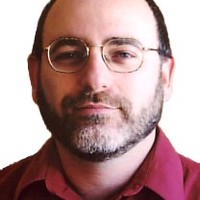
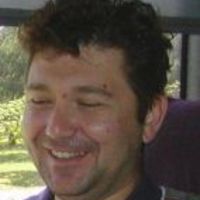
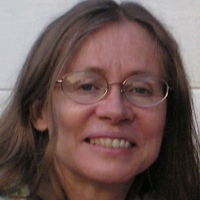


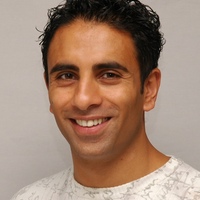
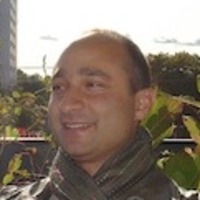
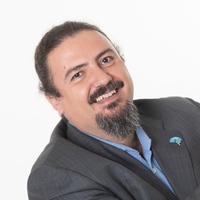
Uploads
Papers by Thierry Dana-picard
Steps of visualisation processes require visuospatial competencies and are also important for other subjects in Science, Technology, Engineering, Arts and Mathematics (STEAM) education (Ng 2017). Being able to understand representations and their spatial rotations, transitions between 2D and 3D and being able to manipulate representations are valuable for STEAM related subjects (Kok 2020). Martin-Dorta et al. (2008) says that spatial abilities can be improved using real and computer-aided models. 3D printing can therefore be an interesting activity as it also combines the mentioned steps in a mathematical modelling way. This approach was used in a beginners course for pre-service mathematics teachers and some of them chose to create mathematical proofs as visualisation. We will look at 3D printed objects, which concepts they visualise and what teachers' ideas behind visualisations were.